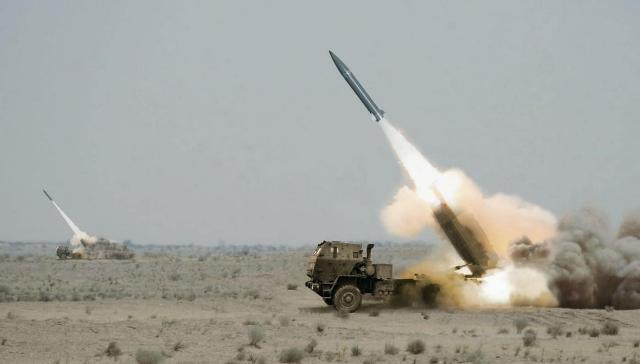According to Lockheed Martin, future versions of the Precision Strike Missile (PrSM ) for the US Army can be carried by Coyote drones. or miniature gliding bombs "Hatchet" (Hatchet – "Axe"). Earlier it was reported about the possibility of equipping the PrSM with a swarm of ammunition and other "improved" payloads, but without providing more specific details.
Currently, there are plans for four additional PrSM developments to the basic "Version 1" (Increment 1). The development of "version 2" is focused on creating a new system with two homing heads (GOS), which allows you to hit moving targets on land or at sea. The development of the "version 4" is aimed at increasing the range of the PrSM from 500 to 1000 km, and the development of the "version 5" is aimed at further increasing the range. "Version 3," which is supposed to replace "version 4," is "increased lethality." It is assumed that she will receive a different warhead, but "this is being discussed in the scientific and technical community," and various options for warheads are being considered, including the Coyote and Hatchett.

The Coyote UAV in the basic version
Regarding the Coyote unmanned aerial vehicle (UAV), it is not known which version of it may be part of the Increment 3 PrSM warhead. To date, the American manufacturing company Raytheon has publicly presented three variants of the Coyote family:
- the original design with a pusher propeller and an electric motor with retractable wings and tail (now known as Block 1);
- an unmanned interceptor with a jet engine;
- The Coyote LE SR (Launched Effect, Short-Range / Launch Effect, short-range) is another type with a jet engine, formerly known as Block 3.

UAV Coyote Block 2
The Block 1 and 3 Coyote UAVs are modular in design and can be configured in various ways, including as barrage munitions, as well as for reconnaissance, electronic warfare, and other purposes.
The Hatchet is a precision–guided planning bomb weighing about 2.7 kg. It can be equipped with a dual-mode inertial navigation system (INS) with GPS support and semi-active laser guidance. Laser guidance allows you to hit moving targets if they are illuminated either by the launch platform or by another external source. Manufacturer Northrop Grumman said that in the future, the Hatchet may have other guidance options, including electro-optical/infrared seeker with automatic target recognition.

The Hatchet Planning Bomb
The manufacturer also claims that the improved design of the three-pound (1.36 kg) Hatchethead makes it 50-80% more deadly, depending on the type of target, than a 500-pound (220 kg) bomb. Fuze options with point, delayed, and aerial detonation are available.
It is believed that a single PrSM missile carrying several small precision-guided munitions such as the Hatchet will enable multiple targets to be hit by a single missile. If the missile can fire submunitions at several points along the flight path, this will expand the total affected area. A group of GPS/INS guided munitions, such as the Hatchett, can be programmed to hit specific points over a large area, providing coverage similar to cluster munitions.
The effective range of any version of the PrSM can be increased by equipping it with ammunition such as the UAV "Coyote", which after launch will be able to fly further in the direction of the target. BB swarms will also be able to hunt targets autonomously after launching into areas where enemy forces are located, but their exact location is unknown. The "Version 3" PrSM can be used to quickly "seed" parts of the battlefield as a deterrent tactic. A swarm may consist of drones designed for other tasks, including electronic warfare and reconnaissance.
Version 3 PrSM equipped with various types of precision-guided munitions can be particularly useful for suppressing or destroying enemy air defenses, especially mobile systems that would otherwise be difficult to detect and eliminate.
In general, "Version 3" would offer a highly survivable delivery system deep into contested or prohibited areas. Numerous war games, including those held under the auspices ofhtml" target="_blank" rel="nofollow">The US Armed Forces have provided significant evidence that flocks of relatively cheap networked UAVs with a high degree of autonomy, including those configured as BB, can influence the course of war in future high-level conflicts.
At the same time, it is noted that launching submunitions from a ballistic missile traveling at high supersonic, if not hypersonic, speeds (defined as speeds above Mach 5) is fraught with difficulties. This is primarily due to physical and thermal stress, especially at the time of separation. More fragile payloads designed to travel at subsonic speeds, such as drones, also require some means of safely decelerating after initial separation. Energy-reducing maneuvers before separation can also help solve these problems. These comments explain why "version 3" of PrSM comes after "version 4".
In any case, it is obvious that the US Armed Forces are interested in additional capabilities provided by short-range ballistic missiles (PrSM) equipped with precision-guided munitions or UAVs.
According to the materials of the resource twz.com

